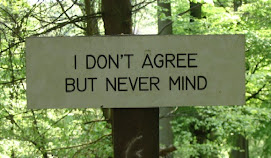
The launch of the Mind Riding course, followed by a discussion about it on The Rev Counter forum's 'Staying Alive' board, set me thinking about teaching and learning.
More particularly, with all the innovations and improvements in teaching techniques, the development of new technology for visual aids, etc. - has learning really got 'better' and teaching more effective?
For my generation, school's TV was a 'new thing', with a a television on a trolley wheeled in to a classroom when needed, while most lessons were still conducted in traditional 'chalk and talk' style.
Now a typical school classroom will have an interactive whiteboard (if you've never seen one, have a Google to find out more, operated by a PC, and linked to the Internet. Classes have laptops or PCs for use some of the time.
I don't know how my teachers at primary school planned their lessons. But I do know how it's done now, using 'Learning Intentions' and 'Success Criteria' instead of 'Aims and Objectives' that most trainers are familiar with. Not knocking that, by the way, the LI & SC method really does change emphasis of planning.
But today's teachers won't just plan 'a lesson' for their class, they'll differentiate for levels of learner too, whether those with learning difficulties, or for the able, gifted, and talented.
Certainly expectations have changed, on a number of levels.
When I first became involved in rider training, there was a photocopied application form, bike check form, and two highway test sheets. For the ‘test’, a pre-printed record card, and for successful graduates, a printed certificate. For one theory night we rented 16mm films, and for another we used 35mm slides. On-road training involved no use of video or bike-to-bike radio, simply ride, chat, repeat, with demonstrations where appropriate.
We had an instructor & examiner manual – but rarely referred to it as we knew what we were doing. Trainees arrived, and 12 weeks later rode away substantially better riders – as far a both we and they were concerned – than when they’d arrived.
‘Fast forward’, and rider training now often features multi-camera on-bike video, with playback of those and other videos using hand-held personal computers, bike-to-bike radio, GPS navigation, ‘Powerpoint’ presentations, PDF publications, DVDs, and extensive lesson planning, and web-based resources.
Is it really a step forward? Yes, and no.
The ability to carry visual resources - I haven't got as far as taking video footage on-bike, or carry a video display with me, instead rely still on printed material - can make discussions much easier.
Nowadays I take a small whiteboard (well, laminated cardboard) - back 'then' I use to kick a piece of Hampshire chalk out of the verge and draw on the tarmac!
But I'd say the best improvements have been - for me, at least - learning about and implemeting Learning Intentions and Success Criteria for planning lessons focussed on the rider's needs, and good bike-to-bike radios.
.





No comments:
Post a Comment